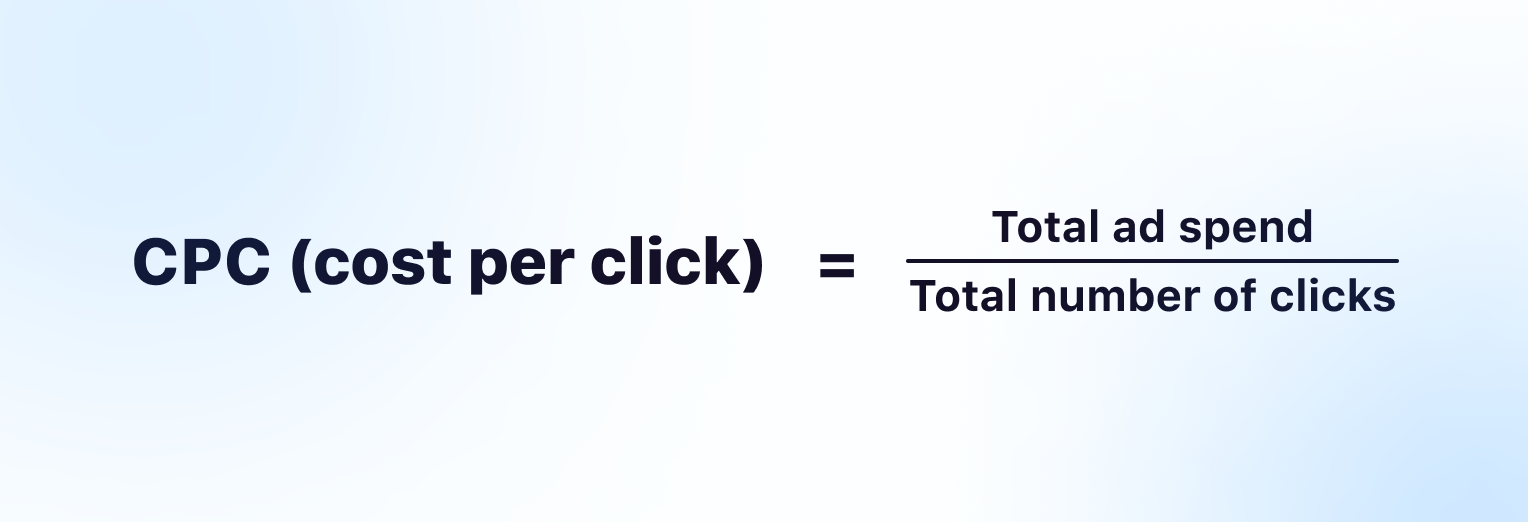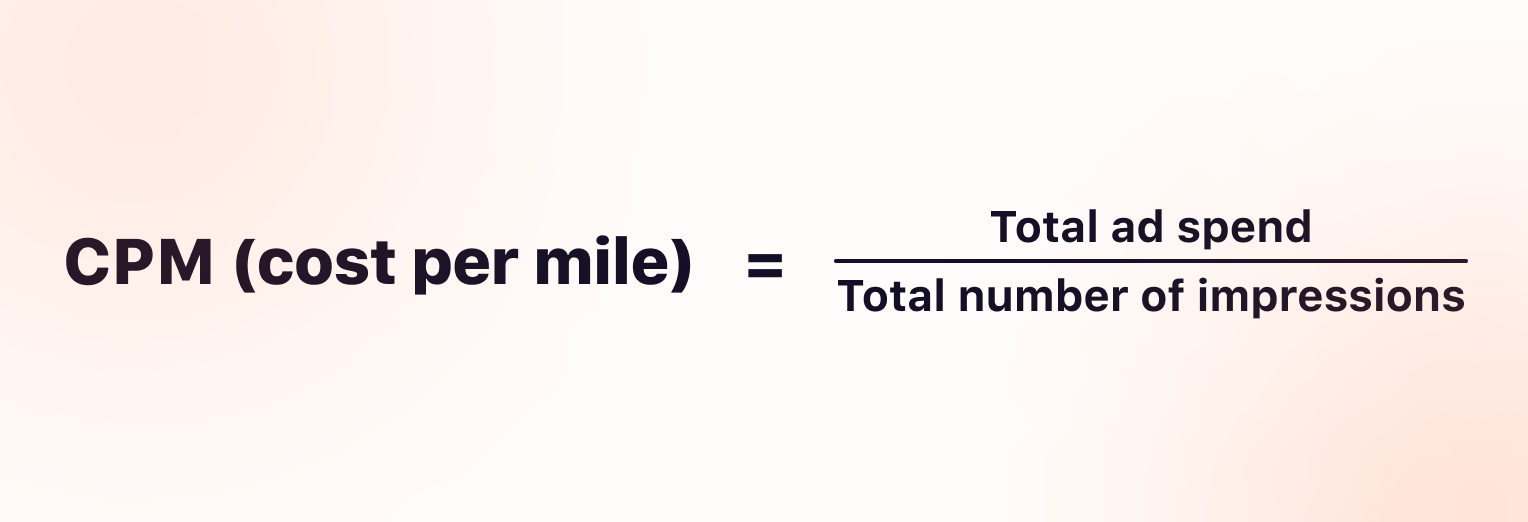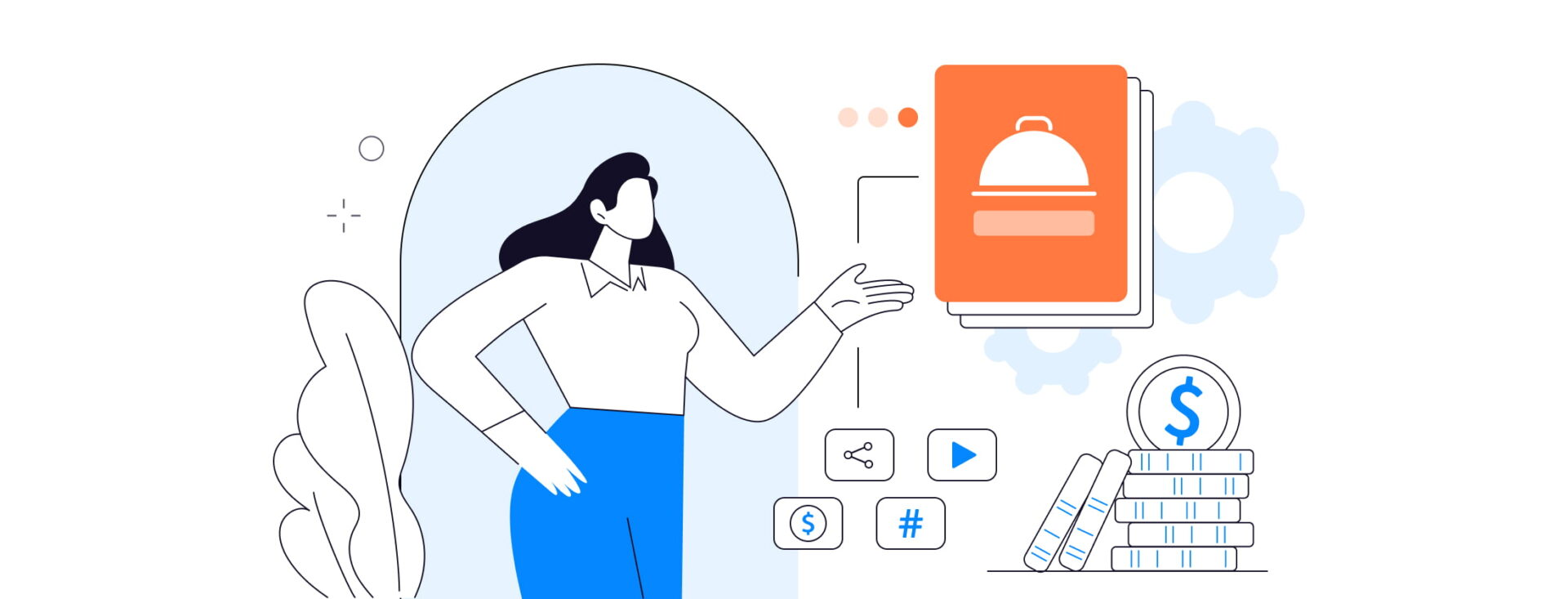Blog

The backbone of your ad campaign is choosing a cost model. The two commonly used models, CPC (Cost per Click) and CPM (Cost per Mile), offer different advantages and considerations. Pop traffic is better to purchase on a CPM basis, while push ads perform best on a CPC model. So what’s the gulf between them?
We’ll clarify the differences between CPC and CPM and provide insights to help you make the right decision. Additionally, we will offer tips on how to set the right bid for maximum results.
In a CPC model, affiliates pay for each click on their advertisements.

Whatever the number of impressions, clicks are what matters most. By focusing on clicks, advertisers can make sure they are paying for tangible user actions. This targeted approach allows for a more efficient allocation of budgets, as advertisers only invest in interactions that have the potential to convert into desired outcomes. Other advantages of the CPC model are versatility across ad formats and scalability.
Disadvantages of the CPC model include the potential discrepancy between clicks and genuine user intent or desired outcomes, limited consideration of ad quality and impact on conversions and unsuitability for certain advertising goals like brand awareness.
To optimize your budget, it’s essential to set restrictions to prevent excessive clicks without conversions.
Should you use CPC? CPC offers predictability and stability, making it an apt choice for campaigns with specific conversion goals. When you pay for clicks, you have a better grasp of the number of clicks you will receive based on your spending, allowing for better budget allocation. This model is ideally suited for push notifications, as advertisers can only be charged when users click on them.
Tips for click limits:
An individual user should be limited to 2 or 3 clicks per day. The reasoning behind this is that if a user clicks on your ad once, but doesn’t complete the desired action, they might convert if they see the ad again. However, allowing more than 3 clicks per day might be helpful for short-term promotions where maximum exposure is imperative.
By implementing click limits, you ensure that your budget is allocated to genuinely interested users who are more likely to take the desired action.
A CPM is a pricing model that offers advertisers a price per 1000 impressions.

Unlike CPC, payments don’t require clicks. However, impressions alone don’t assure conversion. To increase conversion rates, it is vital to create compelling creatives and engaging landing pages that capture the users’ attention and prompt them to respond.
The CPM (Cost Per Mile) model offers several advantages for advertisers. One of the key advantages of the CPM model is the broad brand exposure it provides. With CPM, advertisers pay for every 1,000 impressions, allowing their ads to reach a large audience and increase brand awareness. Additionally, the CPM model offers predictable costs, as advertisers know the exact amount they will be charged for impressions.
The main downside of the CPM business model is that both high conversion and engagement rates aren’t assured. Advertisers pay for impressions regardless of user actions, which can lead to inefficient spending if the ads don’t generate meaningful interactions. In addition, CPM doesn’t directly optimize for specific performance goals, such as clicks or conversions.
Should you use CPM? CPM is perfect for growing brands and campaigns with larger budgets. If you focus on impressions, you can increase brand visibility and create long-term benefits. It is particularly effective for brands aiming to build awareness and recognition among their target audience. The CPM model can also be applied to push ad campaigns, but the most common practice involves pop advertising. The reason is the ability of pop ads to capture immediate attention and generate high visibility.
Tips for effective CPM campaigns
Use these strategies to profit from CPM campaigns:
Several factors influence the decision between using CPC or CPM models:
Let’s consider a hypothetical scenario that outlines the potential returns of both CPC and CPM models. Suppose you have a budget of $100 and your goal is to sell a Nutra product – a body massage roller – for $7.
Calculations:
CPC model:
Step 1. Assuming the CPC is $0.08 per click, with your budget of $200, you could receive 2500 clicks:
100 / $0.08 = 2500
Step 2. Let’s assume 50 people purchased your product, resulting in $350 in revenue:
$7 * 50 = $350.
Step 3. After deducting the advertising cost, your income would be $150:
$350 – $200 = $150.
CPM model:
Step 1. Assuming you purchased CPM traffic for the same $100, at a rate of $1 per 1000 impressions, your ad would reach 100,000 users:
1000 * 100 = 100,000
Step 2. While the conversion rate depends on the product, let’s assume 100 users purchased your item. This would result in a revenue of $700:
$7 * 100 = $700.
Step 3. After deducting the advertising cost, your income would be $700:
$700 – $100 = $600.
When it comes to putting in your best bid, keep these tips in mind:
We have been talking about pricing models common for ad networks. If you want to know about payout models specific to affiliate networks, read the following article:
The right cost model is fundamental for affiliates to efficiently manage their advertising campaigns, whether it be CPC or CPM. Keep your goals, audience, and budget in mind. Consider that CPC provides predictability and stability, while CPM focuses on brand promotion and long-term benefits. By implementing the right bid strategy and monitoring campaign results, you can maximize your efforts and reach your desired results as an affiliate marketer.
The backbone of your ad campaign is choosing a cost model. The two commonly used models, CPC (Cost per Click) and CPM (Cost per Mile), offer different advantages and considerations. Pop traffic is better to purchase on a CPM basis, while push ads perform best on a CPC model. So what’s the gulf between them?
We’ll clarify the differences between CPC and CPM and provide insights to help you make the right decision. Additionally, we will offer tips on how to set the right bid for maximum results.
In a CPC model, affiliates pay for each click on their advertisements.

Whatever the number of impressions, clicks are what matters most. By focusing on clicks, advertisers can make sure they are paying for tangible user actions. This targeted approach allows for a more efficient allocation of budgets, as advertisers only invest in interactions that have the potential to convert into desired outcomes. Other advantages of the CPC model are versatility across ad formats and scalability.
Disadvantages of the CPC model include the potential discrepancy between clicks and genuine user intent or desired outcomes, limited consideration of ad quality and impact on conversions and unsuitability for certain advertising goals like brand awareness.
To optimize your budget, it’s essential to set restrictions to prevent excessive clicks without conversions.
Should you use CPC? CPC offers predictability and stability, making it an apt choice for campaigns with specific conversion goals. When you pay for clicks, you have a better grasp of the number of clicks you will receive based on your spending, allowing for better budget allocation. This model is ideally suited for push notifications, as advertisers can only be charged when users click on them.
Tips for click limits:
An individual user should be limited to 2 or 3 clicks per day. The reasoning behind this is that if a user clicks on your ad once, but doesn’t complete the desired action, they might convert if they see the ad again. However, allowing more than 3 clicks per day might be helpful for short-term promotions where maximum exposure is imperative.
By implementing click limits, you ensure that your budget is allocated to genuinely interested users who are more likely to take the desired action.
A CPM is a pricing model that offers advertisers a price per 1000 impressions.

Unlike CPC, payments don’t require clicks. However, impressions alone don’t assure conversion. To increase conversion rates, it is vital to create compelling creatives and engaging landing pages that capture the users’ attention and prompt them to respond.
The CPM (Cost Per Mile) model offers several advantages for advertisers. One of the key advantages of the CPM model is the broad brand exposure it provides. With CPM, advertisers pay for every 1,000 impressions, allowing their ads to reach a large audience and increase brand awareness. Additionally, the CPM model offers predictable costs, as advertisers know the exact amount they will be charged for impressions.
The main downside of the CPM business model is that both high conversion and engagement rates aren’t assured. Advertisers pay for impressions regardless of user actions, which can lead to inefficient spending if the ads don’t generate meaningful interactions. In addition, CPM doesn’t directly optimize for specific performance goals, such as clicks or conversions.
Should you use CPM? CPM is perfect for growing brands and campaigns with larger budgets. If you focus on impressions, you can increase brand visibility and create long-term benefits. It is particularly effective for brands aiming to build awareness and recognition among their target audience. The CPM model can also be applied to push ad campaigns, but the most common practice involves pop advertising. The reason is the ability of pop ads to capture immediate attention and generate high visibility.
Tips for effective CPM campaigns
Use these strategies to profit from CPM campaigns:
Several factors influence the decision between using CPC or CPM models:
Let’s consider a hypothetical scenario that outlines the potential returns of both CPC and CPM models. Suppose you have a budget of $100 and your goal is to sell a Nutra product – a body massage roller – for $7.
Calculations:
CPC model:
Step 1. Assuming the CPC is $0.08 per click, with your budget of $200, you could receive 2500 clicks:
100 / $0.08 = 2500
Step 2. Let’s assume 50 people purchased your product, resulting in $350 in revenue:
$7 * 50 = $350.
Step 3. After deducting the advertising cost, your income would be $150:
$350 – $200 = $150.
CPM model:
Step 1. Assuming you purchased CPM traffic for the same $100, at a rate of $1 per 1000 impressions, your ad would reach 100,000 users:
1000 * 100 = 100,000
Step 2. While the conversion rate depends on the product, let’s assume 100 users purchased your item. This would result in a revenue of $700:
$7 * 100 = $700.
Step 3. After deducting the advertising cost, your income would be $700:
$700 – $100 = $600.
When it comes to putting in your best bid, keep these tips in mind:
We have been talking about pricing models common for ad networks. If you want to know about payout models specific to affiliate networks, read the following article:
The right cost model is fundamental for affiliates to efficiently manage their advertising campaigns, whether it be CPC or CPM. Keep your goals, audience, and budget in mind. Consider that CPC provides predictability and stability, while CPM focuses on brand promotion and long-term benefits. By implementing the right bid strategy and monitoring campaign results, you can maximize your efforts and reach your desired results as an affiliate marketer.

Blog

Blog